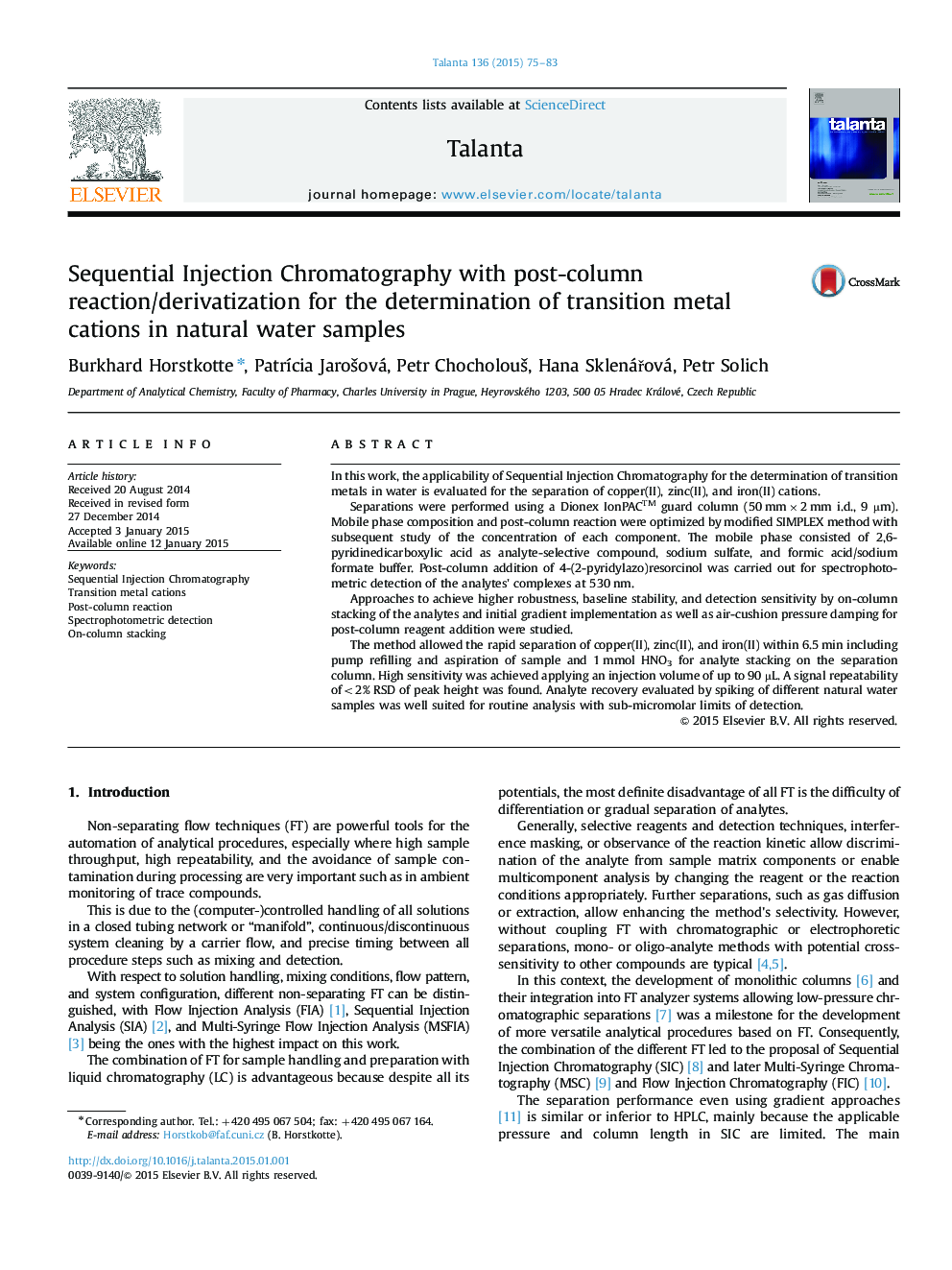| Article ID | Journal | Published Year | Pages | File Type |
|---|---|---|---|---|
| 1241928 | Talanta | 2015 | 9 Pages |
•A simple sequential injection chromatography (SIC) system was set up.•Post-column chromogenic reagent addition was carried out for the first time in SIC.•Separation of transition metal cations on a modified latex guard column was performed.•Simplex optimization of reagent and mobile phase and analyte stacking were performed.•Applicability to real sample analysis was demonstrated.
In this work, the applicability of Sequential Injection Chromatography for the determination of transition metals in water is evaluated for the separation of copper(II), zinc(II), and iron(II) cations.Separations were performed using a Dionex IonPACTM guard column (50 mm×2 mm i.d., 9 µm). Mobile phase composition and post-column reaction were optimized by modified SIMPLEX method with subsequent study of the concentration of each component. The mobile phase consisted of 2,6-pyridinedicarboxylic acid as analyte-selective compound, sodium sulfate, and formic acid/sodium formate buffer. Post-column addition of 4-(2-pyridylazo)resorcinol was carried out for spectrophotometric detection of the analytes׳ complexes at 530 nm.Approaches to achieve higher robustness, baseline stability, and detection sensitivity by on-column stacking of the analytes and initial gradient implementation as well as air-cushion pressure damping for post-column reagent addition were studied.The method allowed the rapid separation of copper(II), zinc(II), and iron(II) within 6.5 min including pump refilling and aspiration of sample and 1 mmol HNO3 for analyte stacking on the separation column. High sensitivity was achieved applying an injection volume of up to 90 µL. A signal repeatability of<2% RSD of peak height was found. Analyte recovery evaluated by spiking of different natural water samples was well suited for routine analysis with sub-micromolar limits of detection.
Graphical abstractFigure optionsDownload full-size imageDownload as PowerPoint slide
